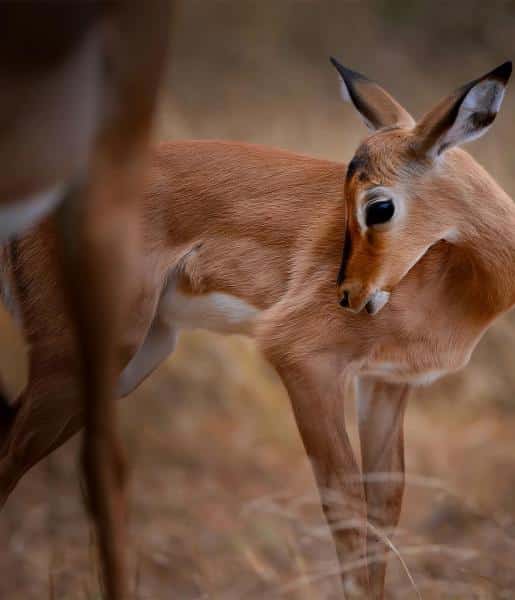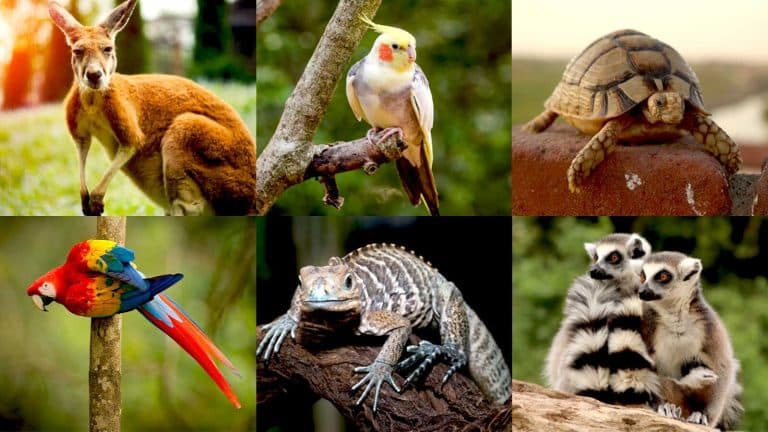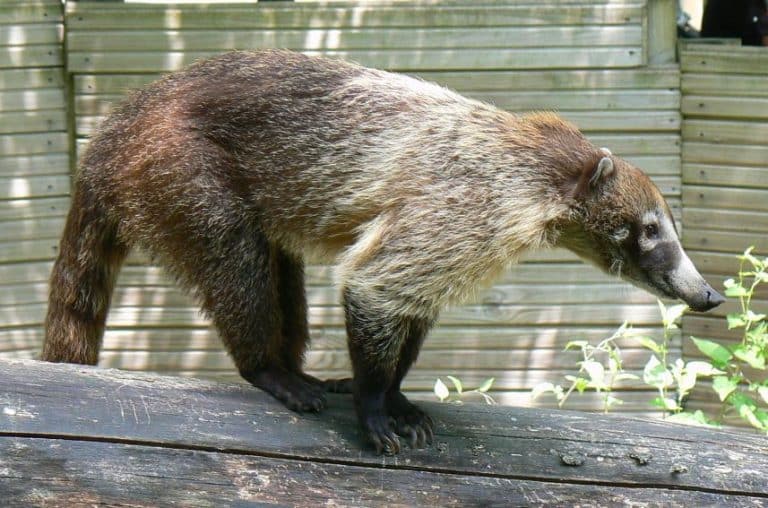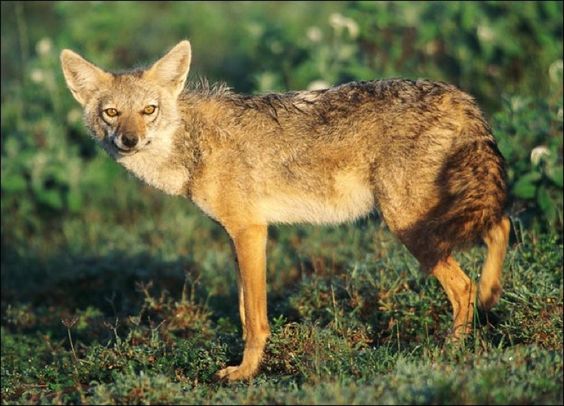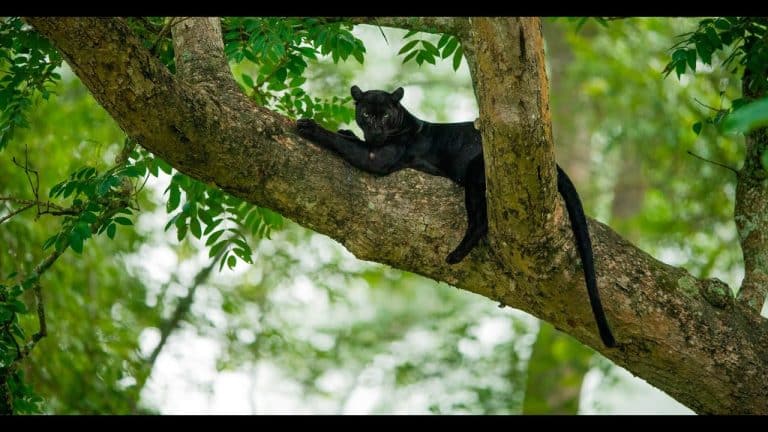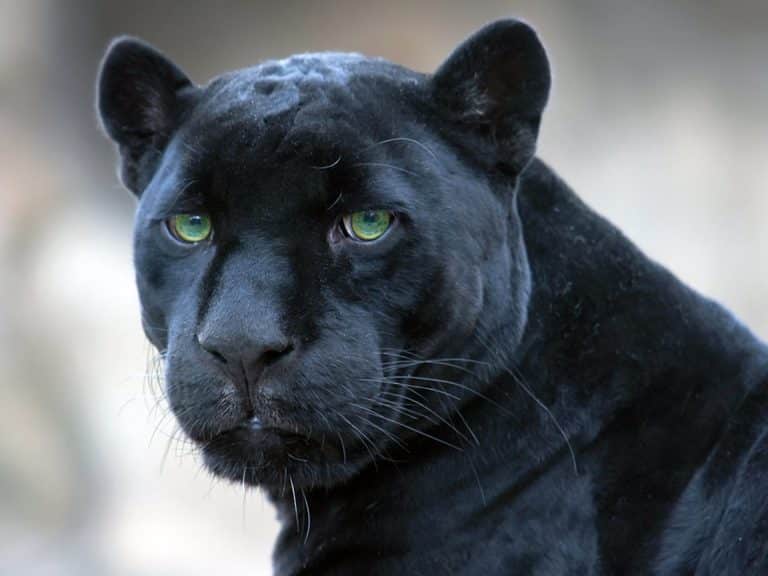Impala Animal: The South African’s Graceful Creature
The animal kingdom presents undiscovered facts or interesting beings we might have never heard about. The vast world of animals makes for the finest stories you will get hooked on. You haven’t explored the exotic wildlife if you haven’t talked about South Africa.
A land of exotic and gorgeous animals, South African jungles have more in the store than you know. Let’s take the story of one animal at a time and begin with Impalas.
Medium-sized Antelope found in Southern and Eastern Africa, Imapals are also known as Rooibok. Roaming around the light woodlands of Africa, they have interesting personalities and amazing characteristics that will hold you captive to their existence. Impalas are gorgeous and clever, so let’s dive into their world with these intriguing facts.
Overview and Features of the Impala Animal
If you have never heard about Impala animals, you are in for a treat. Impalas animals belong to the Antelope group and are native to Southern and Eastern Africa. They come from the Bovidae family and mammalian class.
If you ever want to glimpse these gorgeous beings, you should visit the savannahs or woodlands of Africa during the rainy season. Impalas animals travel in groups during the rainy season. It is during the rains that the whole land gets covered with ample trees, grasses, shrubs, and bushes for their grazing.
During the summer, they stay tight in a group but struggle to find grazing land. Impalas are said to be “browsing” when roaming around in groups looking for food or land for grazing.
1. Appearance
On the first glimpse, Impala’s animal looks strikingly familiar to deer, but if you look closer, there are major differences between them. To begin with, Impalas are medium-sized animals with all their species belonging to reddish-brown color. Their body features a narrow back line from the middle of the lower back to the tail, along with black stripes on the back of each thigh.
Male and female Impalas look similar, the only difference being their horns. Female Impalas do not have horns, while males have beautiful lyre-shaped horns. Their horns make them even more majestic as they stand 40-90 centimeters tall.
They are known for having beautiful eyes that are also very sharp and captivating.
2. Etymology
The term “Impala” has a long history that dates back to 1802 when it was called palla or pallah. Back then, Impalas were referred to as the Red Antelope. Impala was first used somewhere around 1875, and the word has been derived from Zulu.
The African name of Impala is Rooibok and is often used as “Red Buck” in English. Impala is pronounced as “mpala” or “Empala”.
3. Traits
Impalas animals are majestic in their appearance with the capability of enticing any person. Unlike other majestic animals of the kingdom, they are not magnificent. Impalas animals are usually found with an average height of 28 to 36 inches tall with a body weight of not more than 165 to 170 pounds.
They have a lean body that helps them run and prey smoothly. Their horns make them stand apart from other animals as they have a thicker base and tapered ends. The curved horn resembles the traditional musical instrument of Africa.
What makes them even more charming and valuable is their thick and glossy fur. With a gorgeous reddish brown color, their body fur has undertones of white as well.
4. Behaviour
Impalas are truly fascinating animals, and their behavioral traits make for perfect examples.
- Active: Impalas are active animals who spend their day grazing and browsing for food. They are fast as a flash in running and jumping. In addition, Impalas show period activeness- active during the daytime and resting as the sun begins to set.
- Grazing: Impalas tend to spend their life grazing. They roam from one place to another in search of food and vegetation.
- Territorial: These beautiful creatures tend to be aggressive when it comes to a matter of their territory. While they stay in groups, these groups have strict rules, and any Impala trying to come inside faces territorial war from the male Impalas in the group.
- Social: Impalas are extremely social beings with a strong sense of belonging. They roam and spend their lives in groups, and it is nearly impossible to find an Impala living in solitary. What makes their behavior interesting is that Impalas animals have a unique way of forming groups. They form Impala harems with males and females, who can then mate to create offspring. These groups are super close and don’t allow “bachelor” Impalas to come inside. Additionally, there are separate groups of males and females, with the latter having more members. Male groups are often found hustling to survive because of their territorial nature.
- Escape Artists: Impalas are clever animals who know exactly how to get away from predators. Born with a special skill of jumping and running, Impalas can escape within the blink of an eye. As soon as they see a predator, Impalas animals tend to leap high and move their body in a left-to-right movement. This helps them to land in a way that often confuses the predator. At times, they also use vegetation to hide till they get time to run.
5. Lifespan
On average, Impalas can easily live up to 12-13 years. In some cases, they are found to be alive till 15 years, as well. Even after having a lesser-than-average lifespan, they continue to live with their full majestic appearance up until their death. They don’t lose their charm, aesthetic, and features, making them commendable creatures.
6. Mating
Since Impalas have a shorter lifespan than other animals in the kingdom, their sexual maturity also comes early. Male Impalas are sexually mature by 1 year, and females become sexually mature by 1 year and 6 months.
However, males usually indulge in mating and reproduction only after they become 4 years old.
Female Impalas animals are the first to enter their estrus period- when they become capable of getting pregnant. They take around 6-7 months for the gestation period and often run off in solitary to birth their calves. After birthing, mothers bring the calf back to the group, where they wean for about 12-18 months, and calves become capable of reproducing.
7. Diet and Nutrition of Impala Animal
Impalas are herbivore animals who can easily sustain vegetarian food. They are extremely fond of pods, forbs, dicots, and monocots- Easily available in South African woodlands. As sensible and clever as they are, Impalas understand the need for hydration and suck water from the succulents of fresh leaves. They stay away from grazing dead and dry vegetation.
Impalas animals enjoy the rainy season simply because of the easy availability of vegetation. Even during the dry season, they browse the whole day to find fresh vegetation. Impalas don’t prey on animals for food and do not consume even animal byproducts.
8. Habitat
By now, you already know that Impalas are native to South Africa. To be more specific, Impala’s animals roam around savannas and woodlands of Eastern and Southern Africa. They prefer staying in areas more prone to rain as water is crucial for survival. You will hardly find them in dry and rough areas.
Amazing Facts and Features of the Impala Animal
So far, Impalas have been a rather unexplored side of Africa, especially regarding their unique personality. You might have seen Impalas in advertisements as a symbol of speed and fascinating features. Let’s learn 10 amazing facts about Impala that are truly striking.
1. Leaping Capabilities
Impalas have been the ultimate symbol of speed and strength. You must have seen leading automobile companies using Impalas as a metaphor for their launches. Impalas are known for their leaping capabilities.
They can leap up to three times their height, which makes for a treat if you catch it live. With the skills to jump 10 feet in the air, one can only imagine their speed. This becomes even more interesting, given their small bodies.
2. Escape Artist
Every animal living out in the wild has numerous predators. Impalas are threatened by lions, Cheetahs, leopards, and wild dogs- all extremely dangerous animals. An animal whose predators are as scary as Impala’s, how have they survived in such a large number?
The simple answer is their unique escaping tactic. Impalas tend to leap, followed by a right-left movement that confuses their predators. Additionally, their speed makes them visible before their predators can make a move.
3. Delayed Delivery
There is a longstanding story about female Impalas can delay their delivery up to 1 month. A capability is truly unique to them. Since Impalas tend to keep moving throughout the year, it becomes difficult for the mother Impala to deliver. To protect their calf from unfavorable climates or situations, Impalas can push their delivery for another month, which is nothing short of magical.
4. Produces Scent
Every animal in the kingdom has their ways of mating and surviving. The male members in the Impala groups produce a unique scent from glands on their heads. The scent is extremely useful for fooling their predators and enticing female Impalas.
The scent keeps getting better with age, and a male Impala between the age of 2-6 produces the finest scent. This is probably probably because this is the same age where Impalas animals tend to mate the most.
5. Always in a Group
Like humans, Impalas animals are highly social beings who never stay alone. Yes, Impalas always travel in groups or herds. There are several reasons behind this, and two remain constant-
- They are naturally social
- Staying in groups or herds offers better protection from predators
There are different ways these groups are formed. You can find male groups, female herds, bachelor’s groups, or heterogeneous groups.
6. Only Surviving Members of Their Genus
Impalas belong to the Bovidae family at large. However, if you go more specific, they belong to the Aepyceros species. Impalas are the only surviving members of the Aepyceros species. This does not mean that there is a need to panic because Impalas are present in huge numbers and have not been declared endangered.
7. Strongest Male Mates
Now that you know that Impalas travel in groups or herbs, which many times are heterogeneous. Every group has the strongest member (male) who gets to choose their mating companion and reproduce. Once they have made a choice, male Impalas are known to become extremely jealous, territorial, and protective about their partner.
8. Mother Calf-Bond
Mother Impalas protect their calf and always deliver in isolation from the group. Until their baby becomes capable of mating, calves keep weaning from their mother. However, as soon as calves become capable of mating, they leave their mothers and wander off with new groups. This probably becomes the biggest reason Impala groups usually have several unrelated members.
9. Delivery During Mid-Day
Female Impalas become capable of giving birth as soon as they turn around 1 year and 6 months. After six to seven months of gestation period, they are ready to deliver. Impalas deliver during mid-day when the sun is at its peak. They do this to prevent predators from attacking when mother Impalas are weakest. Not to forget their capability to push delivery by a month.
10. Meat
Impalas are treated as a delicacy in many parts of the world, especially Africa. Africans have a jerky-like delicacy that is made purely out of Impala meat. The tender and dry texture makes for an important ingredient in many traditional meals of Africa.
Population Threats and Conservation of the Impalas
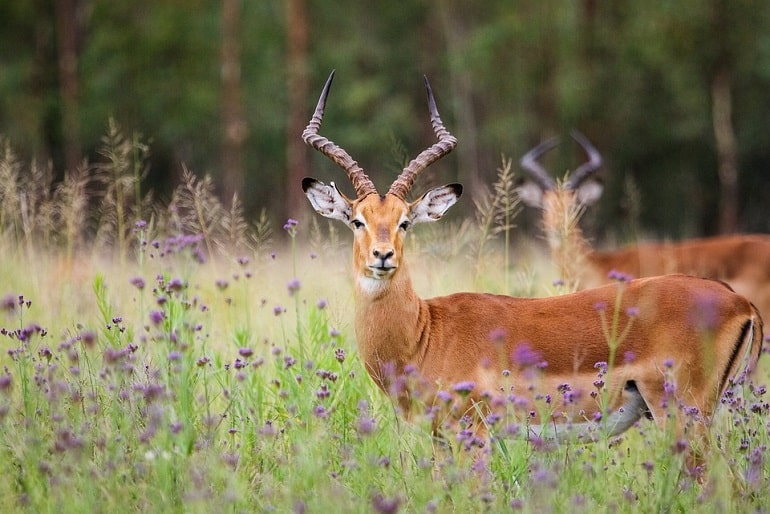
Impalas are of great value as they have gorgeous fur and horns that become a major financial gain for the market. In addition, studies show that they are the most hunted beings of the Antelope group simply because of the popular hunting safari experience in Africa. In addition, they are also at threat from predators, but till now, this has not gone ballistic.
Impala animals are not declared endangered, and it is only the black-faced Impala that was recently declared vulnerable by the Conservation of Nature and Natural Resources. Africa is extremely conscious about Impalas and has moved many black-faced Impalas to private farms.
Here’s what we believe will help them remain in large numbers-
- Engage Government/Authorities
- Raise Awareness
- Provide Impalas animal safety and protected homes
- Stop hunting safaris as a part of tourism
- Strict Laws for Impala Trafficking
Summing Up
Impalas, being a gift to Southern and Eastern Africa, are probably the most popular members of the Antelope group. If you have reached here, you know that Impalas have some amazing skills that include leaping, jumping, and running, which also makes them amazing escape artists.
They are gorgeous animals with a strong sense of brotherhood. Being extremely intelligent and clever, they have survived years of being out in the wild and remain present in large numbers. While there are threats to their existence, there are simple steps that can conserve these beautiful beings.
You can also explore to find animal rights groups and institutions that are working hard to keep them protected. If you have never seen an Impala, this might be the right time to plan a safari ride around the woodlands of Africa and remember not to hunt them.
Frequently Asked Questions
What are Impalas?
Impalas are graceful antelopes found mostly in South Africa. They are beautiful beings of the animal kingdom who have amazing running and leaping capabilities. Reddish brown, they are medium-sized beings with a strong sense of group and territory.
Impalas are Native to Which Country?
Impalas are native to South Africa. Presently, they are found in savannas and woodlands of Eastern and Southern Africa. Their meat is exported to many countries in the West, as well.
Are Impalas Endangered?
No, Impalas have not been declared endangered by any authority. Around 2 million Impalas are living in Eastern and Southern Africa. There are concerns regarding black-faced Impalas, which have been announced as vulnerable recently.
What Do Impalas Eat?
Impalas are one of the few herbivores in the animal kingdom. They depend completely on vegetation for their diet and do not consume meat. Impalas often graze through grassland and bushes throughout the rainy season.
What Makes Impalas Fascinating?
Impalas are known for their unique personality traits and behavior. Several facts about their lifestyle make them fascinating, including their leaping capabilities, social personality, delayed delivery, escape techniques, and vegetarian diet.

